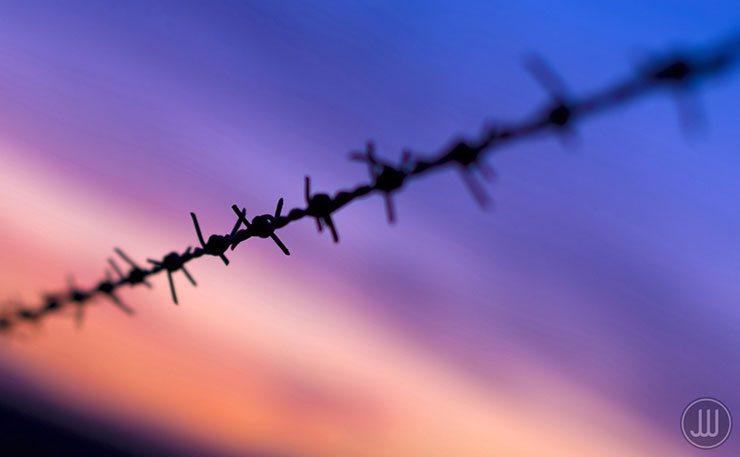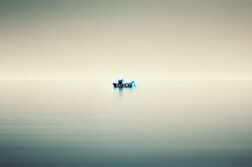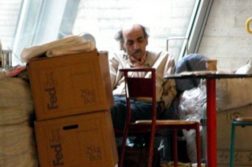Five years working in immigration detention takes a toll. But it can also inspire, writes Christine Cummins.
I’ve had eleven months to process my experience on Christmas Island. I was emotionally and physically exhausted when I returned to the mainland, but what the last eleven months has allowed is time to heal, reflect and question.
Most of all question.
I am left with questions such as what does it take to change government policy? How can I effect positive change? What does it take to raise social consciousness? How can I make the past five years truly worthy? All without wanting to sound like a ‘Do-gooder’ running for martyr of the year!
For five years I worked on Christmas Island (CI) as a torture and trauma counsellor, working with asylum seekers detained within the Australian Immigration detention centre (IDC). I worked with children, women, young unaccompanied boys and girls, but mostly men.
I had worked as a foreign aid worker in the past and had travelled extensively, essentially opening myself up for many lived cultural experiences. I remember before I went to Christmas Island in January 2010, there had been an incident of unrest in the centre, the boats had started arriving fairly often and there was obviously tension within the IDC.
Someone asked before I left if I was worried for my personal safety. I was astounded that I would be asked this; it hadn’t occurred to me that I may be at risk by offering counselling to asylum seekers, but the negative image of asylum seekers was emerging.
On Christmas Island I watched boats of desperate people arrive onto the gorgeous little island and then watched as the process of detainment broke them.
People had fled unimaginable suffering and would present to me, relieved to be offered sanctuary and protection. I often cringed internally at what we truly offered. I was privy to amazing stories of determination and courage, and it’s time to share some of these stories.
Joseph and Lavinia Kumar* were a young couple travelling with their 10-year-old daughter Sylvia. I remember Lavinia softly crying as she shared their story.
They had owned a small textile business in the far north of Sri Lanka. They tried to live a purposeful life, devoted Catholics they had used their faith to sustain them.
In January 2009 the family were among the many thousands of Tamils who became displaced. The conflict had escalated and they found themselves in Mullaitivu, the place of the final battle of the civil war. Along with thousands of other people the Kumar`s had been herded into a camp in the safe zone, with their three young children, Sylvia who was nine, Mary who was seven and three year old Michael.
On April 15, 2009 the camp was shelled repeatedly; they described the scene as chaotic, people running in every direction trying desperately to find a way out. The family were caught in the middle of this intense conflict and helplessly watched as their youngest children Mary and Michael were hit and killed. They were forced to flee leaving the bodies of their children lying alongside countless others, later to be buried in a mass grave.
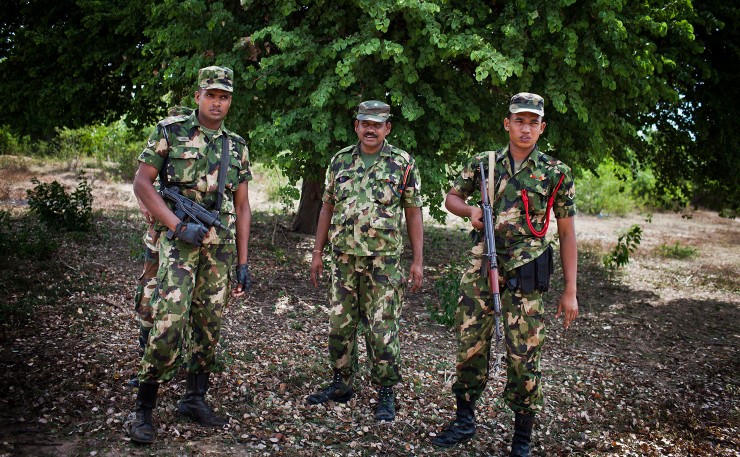
(IMAGE: Conor Ashleigh/AusAID, Department of Foreign Affairs and Trade, Flickr)
Both Lavinia and Joseph sustained serious wounds, needing emergency surgery. Taken to different hospitals and separated for six weeks, they were reunited in a camp hospital, where they were offered assistance by the husband of another patient.
He offered to help smuggle them out and away from the camp, this complete stranger bribed two army officers and arranged for them to go into hiding in Colombo and wait for passports to be arranged. They sold Lavinia’s jewellery; the army started searching for them.
Joseph told me of the day an army officer came to the safe house during a routine search, all three quickly hid under a bed together, holding their breath and waiting to be caught. They watched the boots of the officer enter the room; he stopped turned on the television, sat on the bed they were under and watched the cricket for 45 minutes. Joseph told me he will always look at the cricket with a smile, it saved our lives! After two weeks they received their passports and tickets to fly to India.
But India offered little safety and security. The family regularly attended a Catholic church where they were eventually approached by a man offering assistance to get them to Australia. They travelled by boat from Tamil Nadu until they were found by an Australian Customs vessel near Christmas Island. They had spent 24 days at sea; the final three days were without food or water.
By far the greatest heartbreak for this family was the graphic memory they each shared, of Mary and Michael’s bodies left with all the other victims of the massacre. Their grief was so immense, so raw, that they had mended physically from the wounds but the sadness was overwhelming, stunting any hope of healing.
I learned very early on that if someone presents with a strong faith or spirituality, I tapped into that. Because that is what has held them together through traumatic times and is the key to healing.
For the Kumars I arranged a Catholic memorial service at the little Catholic church on Christmas Island. They had a photo of Mary and Michael and I copied this onto a memorial card, and borrowed a Tamil prayer book to help find the right words.
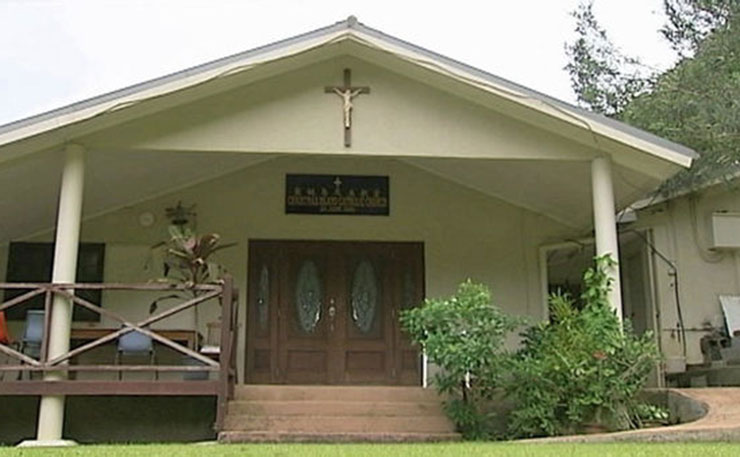
Each person who attended was given the memorial card; it was this small gesture that was so very important to Lavinia, because this is what they would have done at home. For the Kumars this memorial was an opportunity to mourn, to reflect on the great sadness they had endured, and to open that pathway to healing.
I will never forget this family; they are a standout memory to me. I learned so much from them, about the importance of faith, personal courage, dignity and healing. But, I can still hear the keening of Lavinia when I allow myself to reflect on that ceremony, because it was just so heartbreaking.
These were the people I worked with for five years. When someone inferred asylum seekers were dangerous, I thought that was the opinion of a very small minority, it’s not. I get it; Australia is a delightfully rich and wondrous land, we need to protect it from Islamic extremism. Asylum seekers are obviously an Islamic threat because, well, they just are, because they’re all Muslims, right?
We have been toyed with for political gain. By simply using the same key words and phrases everyday with just the right amount of vitriol, the doctors of spin have won. Asylum seekers are “queue jumping illegals”, non-human, considered unworthy.
Two deaths of young healthy men detained on Manus Island should have been enough to make us give a collective gasp and change policy immediately, it didn’t.
When the President of the Australian Human Rights Commission Gillian Trigg’s released the National Inquiry into children in Immigration Detention report she was caned. The content of the report barely warranted a mention because, who the hell was she to tell us how to manage the illegals.
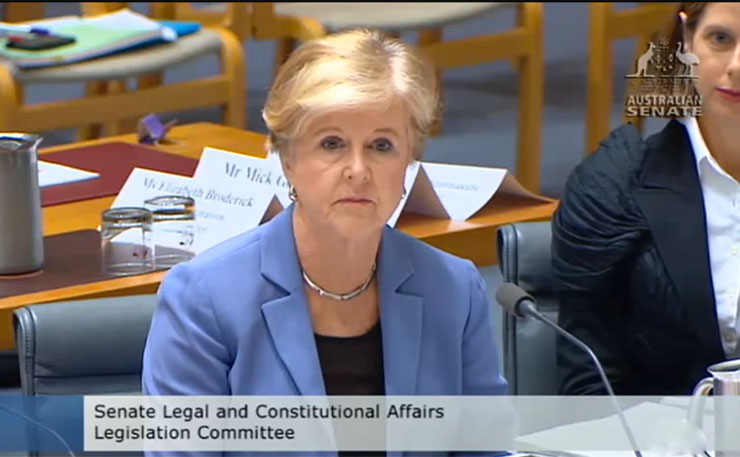
When the government’s own Moss Report revealed shocking stories of abuse in the Nauru offshore detention centre, no-one really lost sleep over it.
The new Border Force Act was introduced in July this year; one of the most aggressive sections is the new legislation making it a criminal offence to disclose anything observed within a detention centre, to be enforced with two year imprisonment.
So we know people are being treated badly, and now we can’t advocate for some of the most vulnerable. It seems the inhumane treatment of asylum seekers and refugees barely elicits a raised eyebrow.
I think people rationalise the horrors by believing the government has our back, we are being protected from the dangers the illegals may bring. So we are justified in making sure “they” are all locked away where “they” can have a good hard look at themselves, long enough to decide to go back to where “they” bloody well came from.
It’s October 2015 and there is finally a smidgeon of social angst. Healthcare workers at the Royal Children’s Hospital in Melbourne are refusing to return children to the detention environment. Social justice platforms and marches occur, rallies and speeches, letter writing campaigns, petitions (including one I started myself) and voices of the outraged are getting louder.
The general population is starting to question why we are spending $5 billion dollars each year to lock people up on Manus Island and Nauru. And why we spent $55.5 million to send four refugees from Nauru to Cambodia, and why we gifted the Cambodian government an extra $40 million incentive down payment for signing that dodgy deal.
But until we change government policy, until we re-humanise the demonised, until we end offshore detention, I will not stop talking and questioning. And I will continue to wonder how we allowed ourselves to be masterfully manipulated by political spin doctors?
What I have witnessed is undoubtedly shameful. I want it to stop now, because enough people have made their political gains, enough people have prospered, enough people have been punished for being desperate, enough Lavinia’s, Joseph’s and Sylvia’s have suffered.
It’s enough.
* Names have been altered to protect identities. You can sign Christine’s petition to repeal the secrecy provisions of the Border Force Act here.
Donate To New Matilda
New Matilda is a small, independent media outlet. We survive through reader contributions, and never losing a lawsuit. If you got something from this article, giving something back helps us to continue speaking truth to power. Every little bit counts.

